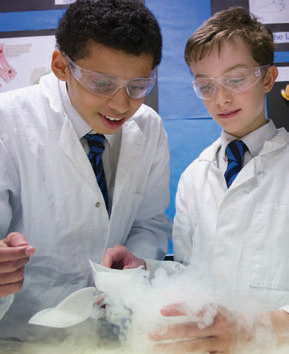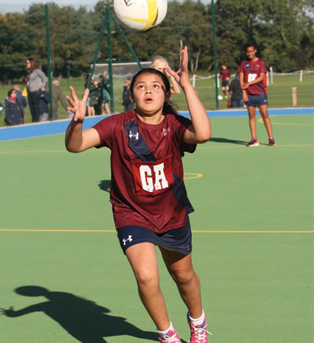Menu
DID YOU KNOW… …HOW IMPORTANT QUALITY TIME TOGETHER AND SHARED EXPERIENCES ARE WITH YOUR CHILDREN, SUCH AS FAMILY MEALTIMES AND GROUP ACTIVITIES?
 If that sounds a bit extreme, on a more achievable level Biddulph suggests we allow our children to spend more time with older role models – “That’s where girls got their affirmation of who they are, now they look to phones in the middle of the night” – and more time with parents. He claims a five per cent change in the way parents behave could make enough of a difference to move your daughter out of the mental health danger zone. But is this hysterical hyperbole? The numbers don’t lie. In 2016, NHS figures show that 2,311 girls were hospitalised after cutting themselves, four times higher than a decade earlier.
If that sounds a bit extreme, on a more achievable level Biddulph suggests we allow our children to spend more time with older role models – “That’s where girls got their affirmation of who they are, now they look to phones in the middle of the night” – and more time with parents. He claims a five per cent change in the way parents behave could make enough of a difference to move your daughter out of the mental health danger zone. But is this hysterical hyperbole? The numbers don’t lie. In 2016, NHS figures show that 2,311 girls were hospitalised after cutting themselves, four times higher than a decade earlier.
Many schools are taking this issue seriously, starting with identifying the threats to our children’s state of mind and implementing strategies to help. Head of wellbeing at Dulwich College, Sarah Griffiths, believes: “The main threats to children’s wellbeing include: risky or inappropriate behaviour online, which can stem from the lack of boundaries in place on the internet; pressure from a multitude of angles to succeed academically and to present a ‘perfect’ life online; deep-rooted fears about personal and future security fed by the apparent prevalence of terrorism; and the perceived difficulty in finding employment after university or school.”
Lunnon agrees it’s a multi-faceted beast: “In some ways, there is no one single issue here. Instead, it feels like a perfect storm of a number of things: the impact of social media, increasing exam pressure and the anxieties around that, growing commercialisation of very young children, and families under time and financial pressure. If I had to pick one thing though, I would probably sum it up for children and teens as being about not belonging to something bigger than themselves that really matters.”
It comes back to Biddulph’s earlier comments about girls looking for affirmation online in the middle of the night. Without a real community around them, they will look for a tribe elsewhere, but are the role models they follow the people you want your child to aspire to be? Instagram has been rated the worst social media site for young people’s mental health, according to a survey of 1,500 14 to 24 year olds. When asked to consider health and wellbeing issues such as access
“FEELING PART OF A COMMUNITY, AS OPPOSED TO A VIRTUAL ONE, CAN HELP BUILD SELF-ESTEEM, IDENTITY AND A SENSE OF BELONGING”
DID YOU KNOW… …RELATIONSHIPS ARE AT THE HEART OF CHILDREN’S WELLBEING, HIGHLIGHTING THEIR NEED FOR LOVE, SUPPORT, RESPECT, FAIRNESS, FREEDOM AND SAFETY
Feeling part of a real community, as opposed to a virtual one, can help build self-esteem, identity and a sense of belonging, something that must be nurtured in really young people to carry with them into their teens, as Edward Rees, headmaster of Hornsby House explains.
“At primary school age, the problems we witness often relate to relationships and the need, that we all experience, to feel accepted by the social group in which we sit.” It’s human nature to want to be part of something bigger than ourselves and this is where schools can make a tangible difference.
E-SAFETY
 Today’s pre-teens are the first pure digital generation, having grown up with mobile devices. Digital technology is powerful and brings huge opportunities, but learning to use the web and social media appropriately is an important process.
Today’s pre-teens are the first pure digital generation, having grown up with mobile devices. Digital technology is powerful and brings huge opportunities, but learning to use the web and social media appropriately is an important process.
Workshops to engage parents in the digital world, with pupils and parents learning from each other, are key. Teaching children to use digital technology involves discussion, open communication and an environment at both home and school where mistakes can be made. This way, children develop a healthy relationship with technology and the online maturity to keep them safe. Draw up a ‘Family Agreement’ considering:
.
At Alleyn’s, deputy head Andy Skinnard takes this very seriously. “It is vital that children in their early teens have contact with the outside world, with society,” he explains. “But the school has an important role in this. It’s a community where everyone is valued, where there are people who can help, from their tutor to their housemaster to the chaplain or older pupils.”
Naturally, in the teenage years, taking risks becomes more apparent. “Risk taking is about socialisation,” says Skinnard. “Current studies show that on their own teens are safe, but with other teens, their behaviour becomes more risky.” Alleyn’s has dedicated lessons looking at many issues including risk, incorporating external speakers and age-appropriate material to encourage the pupils to ask themselves: How am I developing as a person?
Coping with life’s challenges is key to wellbeing and arming children to cope with failure is vital. Rees explains: “The competitive assessment process at 11+ and 13+ can be overwhelming for some children
and cause unwanted anxiety. Unfortunately, prep schools are a ‘captive audience’, dancing to the tune of the secondary schools who know that the demand for places greatly outstrips supply. Until this changes, there will always be pressure on prep schools to focus on exam preparation and outcomes, and young children are, sadly, exposed to an unreasonable level of anxiety.
“Our job, as educators, is to try and encourage parents and children to gain a sense of perspective. Your 11+ or 13+ results do not dictate how successful or, more importantly, happy you are going to be in your life. The balance between preparing children well for their exams and still providing a broad, balanced, creative and exciting curriculum is key, so that the process of learning becomes the focus as opposed to the outcome.”
“SCHOOL COMMUNITY HAS A ROLE IN HELPING STUDENTS REMEMBER WHY LIFE IS GOOD… REMINDING THEM THAT LIFE IS FUN, TO BE CELEBRATED”
Educating children with the knowledge and language they need to explore and understand the confusing emotions they feel will inevitably aid their progress. Dulwich College has created a comprehensive programme to prepare pupils for life’s journey. “Our wellbeing programmes cover topics in age-appropriate ways that support physical, emotional and spiritual health, promote healthy living, encourage engagement in local, regional and global communities and prepare pupils for their next steps”, Griffths says.
“We have a Quiet Room available to boys and staff with coaching and counselling services available to all. We actively promote emotional literacy across the age ranges from our smallest children in the Kindergarten to our senior boys preparing to sit their A levels; we look to promote healthy coping strategies and to develop resilience and empathy.”
A PICTURE OF CHILDREN’S WELLBEING IN THE UK
 The Good Childhood Report 2015 reported a shift in attitudes over the last decade from ‘children should be seen and not heard’, to listening to them about how they feel about their lives as a whole, about their relationships, the amount of choice that they have in their lives, and their future.
The Good Childhood Report 2015 reported a shift in attitudes over the last decade from ‘children should be seen and not heard’, to listening to them about how they feel about their lives as a whole, about their relationships, the amount of choice that they have in their lives, and their future.
In collaboration with the University of York, the research has found over the decade that while personality traits play a part in understanding why children’s subjective wellbeing varies, these kind of factors leave most of the variation unexplained.
However, the research has uncovered significant links between children’s subjective wellbeing and a range of socio-economic factors, contextual factors, life events, activities and behaviours.
Household income explains only a small amount of the variation, but material deprivation explains much more, as does quality of family relationships. Bullying has a more substantial impact on wellbeing.
Positive impacts include playing sport, exercising, paying attention to surroundings, connecting with other people and learning new things.
Community is the buzz word that comes up again and again among all the educators to whom I spoke. “Schools hold a special position in society,” continues Griffiths. “They are a bridge between parents and pupils and a hub of a community. If schools are resourced to educate their staff and students, they can change their environment and culture to provide an atmosphere conducive to good mental health and provide specialist support when needed for children who may be struggling with 21st century life. That the number of children with mental health issues is rising should provoke us to look at the root causes, but also to celebrate that such issues are now spoken about publicly.”
Lunnon believes the school community has a role in helping students remember why life is good: “It helps remind them that, despite the pressure, life is fun, to be celebrated. It’s important that children find their thing, whatever it is, and we invest a lot of time and energy into helping our girls to do that. Full engagement in another activity is a great way to help our children maintain perspective on life and, of course, to build their sense of confidence and of themselves.
“Secondly, it’s important that children feel they belong to something bigger than they are, and that should come from the school and the way it shares its values, its mission and its purpose with the children. The school will become part of their identity forever and we want them to be proud of that and to celebrate it for the rest of their lives, to feel connected to all who went before and come after them. That is a good way to reduce immediate and day-to-day anxieties.”
BUILDING RESILIENCE